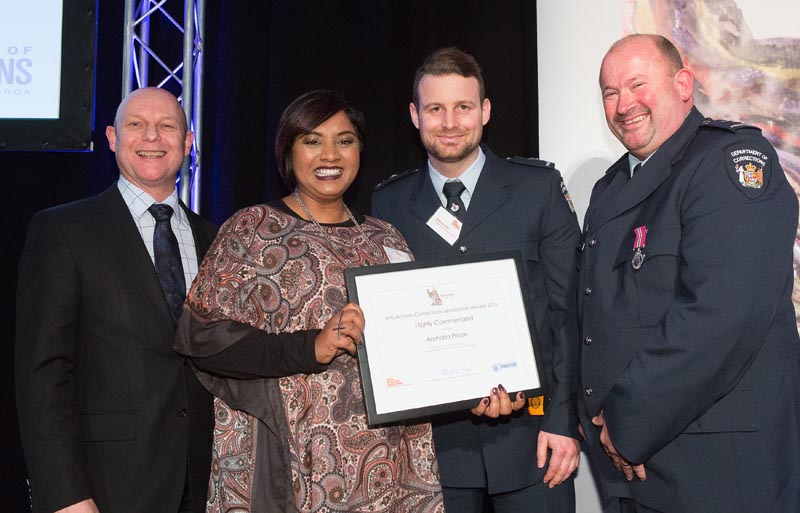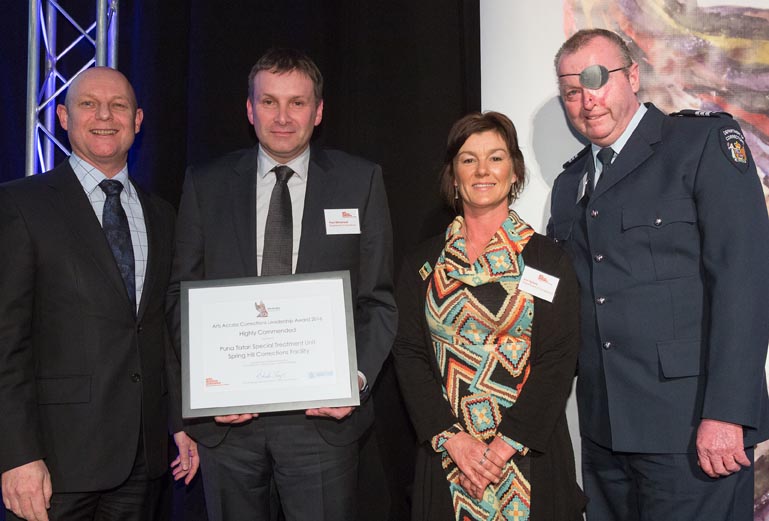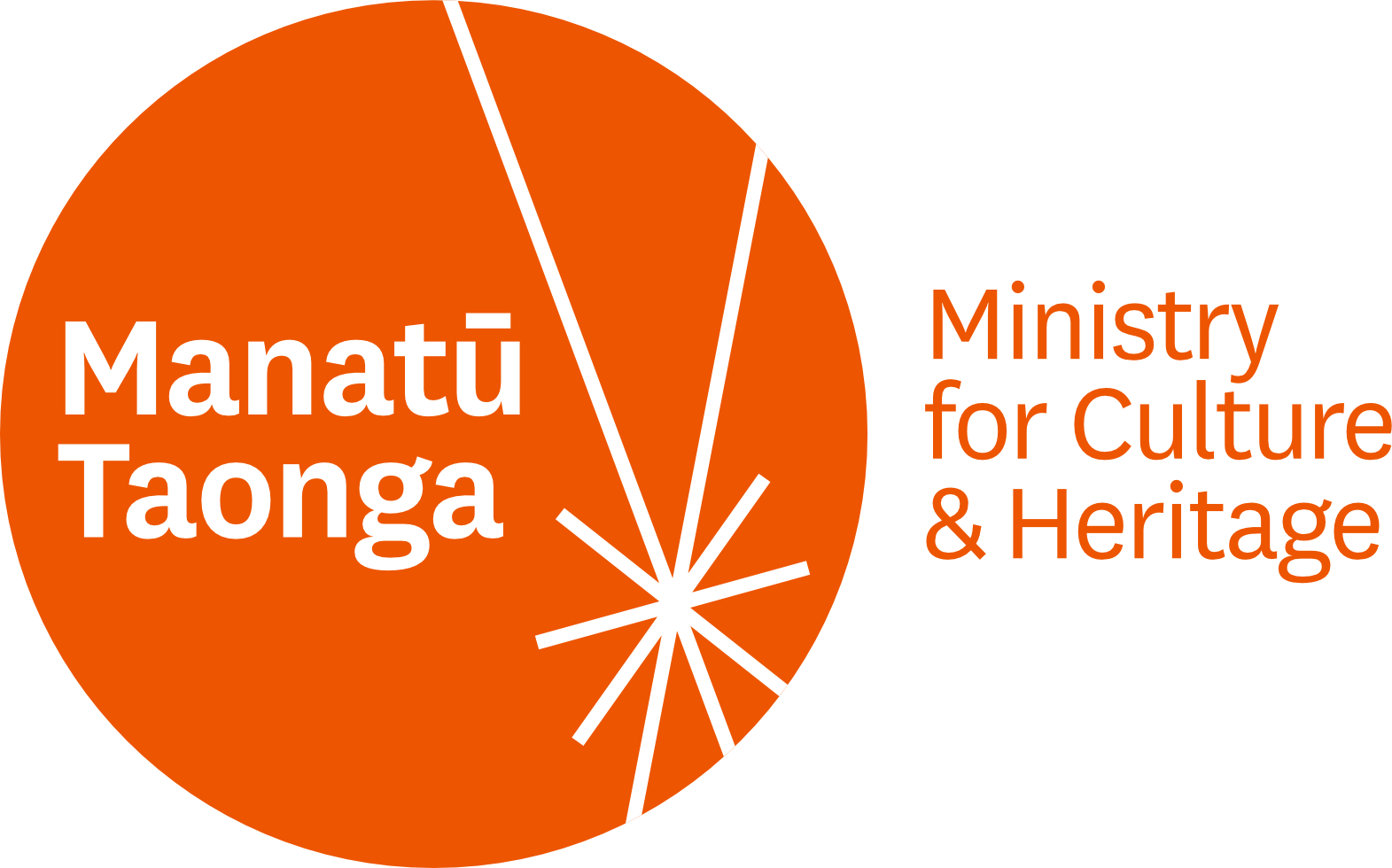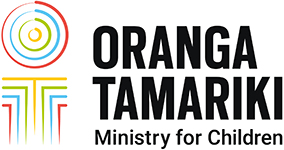Highly Commended citations recognise leadership and community
Along with the recipients of the two Arts Access Corrections Awards for leadership and community, three Highly Commended citations were presented at the Arts Access Awards 2016 to recognise Arts in Corrections facilities and in the community.
Highly Commended citations were presented to:
- Awhi Tautoko, Community Corrections, Whangarei, Arts Access Corrections Community Award 2016, for its grassroots programme that gives community-based offenders a way to express themselves and their world through art.
- Arohata Prison, Tawa, Wellington, Arts Access Corrections Leadership Award, for its use of the arts as therapy and as a reintegration tool across all three units.
- Puna Tatari Special Treatment Unit, Spring Hill Corrections Facility, Te Kauwhata, Waikato, Arts Access Corrections Leadership Award, for its application of the arts and culture as an integral part of its psychological services and physical environment
Awhi Tautoko, Community Corrections, Whangarei
Awhi Tautoko is a culturally therapeutic experience, designed to give community-based offenders a way to express themselves and their world through art. Attendance is voluntary and participants of any age are invited to engage. It is led by two women, Selma Pirihi and Chelsea Pou.
 Selma was inspired by her grandfather’s teachings when she was at a crossroads in her own life and says that accepting his guidance was instrumental in her life journey. Together, Selma and Chelsea provide insights of their tupuna. With this comes encouragement, respect and honesty, demonstrated by all who attend.
Selma was inspired by her grandfather’s teachings when she was at a crossroads in her own life and says that accepting his guidance was instrumental in her life journey. Together, Selma and Chelsea provide insights of their tupuna. With this comes encouragement, respect and honesty, demonstrated by all who attend.
Through this experience, participants say their wairua has been challenged, using the therapy model of Te Whare Tapa Wha. This maps a person’s wellbeing across four supports: whanau (relationships), tinana (physical wellbeing), hinengaro (mental wellbeing) and wairua (spiritual peace).
This experience draws on their thoughts and feelings, which are then manifested through by their chosen art medium.
Arohata Prison, Tawa, Wellington
Using the arts as therapy and as a reintegration tool is part of the kaupapa for all three units at Arohata Prison. Staff are enthusiastic about considering creative and innovative approaches to deal with recidivism.
 Most of the projects are delivered in collaboration with volunteers and contractors, and staff are highly supportive of these people from the community coming into the prison.
Most of the projects are delivered in collaboration with volunteers and contractors, and staff are highly supportive of these people from the community coming into the prison.
The arts projects and programmes complement the more traditional rehabilitative methods. There are ongoing creative writing and quilting programmes. Other activities include the Looking Glass Prison Theatre Project, a tikanga-based programme, the Christmas Concert 2015 with ZONTA, and harakeke and creativity workshops.
Puna Tatari Special Treatment Unit, Spring Hill Corrections Facility, Waikato
Spring Hill Corrections Facility’s Puna Tatari is a high-intensity treatment programme, one of six Special Treatment Units in New Zealand prisons for men serving sentences for violent or sexual offending. The programme is delivered by psychologists and programme facilitators within a prison-based therapeutic-community environment. Participants are accommodated within the STU for approximately nine to ten months to complete the programme.
 Prior to 2015, the environment within Puna Tatari was a blank canvas with limited garden and no art. Over the past year the unit has been transformed – using art as a medium for therapy – bringing warmth and a sense of community.
Prior to 2015, the environment within Puna Tatari was a blank canvas with limited garden and no art. Over the past year the unit has been transformed – using art as a medium for therapy – bringing warmth and a sense of community.
Puna Tatari has five living principles: honesty, responsibility, caring, trust and commitment, with an overarching theme of reflection. The garden, sculptures and artwork have all been developed by the prisoners, who are now constantly surrounded by artworks representing these principles.
LATEST POSTS
- Creative New Zealand launches its first Accessibility Policy and Action Plan
- Arts Access Aotearoa launches Art Inside podcast series
- Volunteers welcomed back to prison sites
- Recipients of Creative Arts and Cultural Wellbeing Prison Initiative
- Celebrating completion of fellowship project
- New guide for sensory relaxed performances
Arts News Categories
- Accessibility
- Achievements Celebrations
- Active Recreation
- Advocacy Campaigns
- Arts Accessibility
- Arts Culture
- Arts For All
- Arts In Corrections
- Auckland Region
- Business
- Comedy
- Community Arts
- Community Development
- Community Services
- Conferences Workshops Classes
- Covid 19
- Creative Spaces
- Creative Wellbeing
- Dance
- Design Arts
- Digital Culture Arts
- Event Promotion
- Events
- Festivals
- Festivals Arts
- Fundraising
- Management Governance
- Maori
- Maori Art
- Mental Health
- Moving Image
- Music Sound
- Obituaries
- Professional Development
- Stories About People
- Theatre
- Visual Arts
- Wellington Region
- Work Jobs
- Writing Publishing
- Young People




